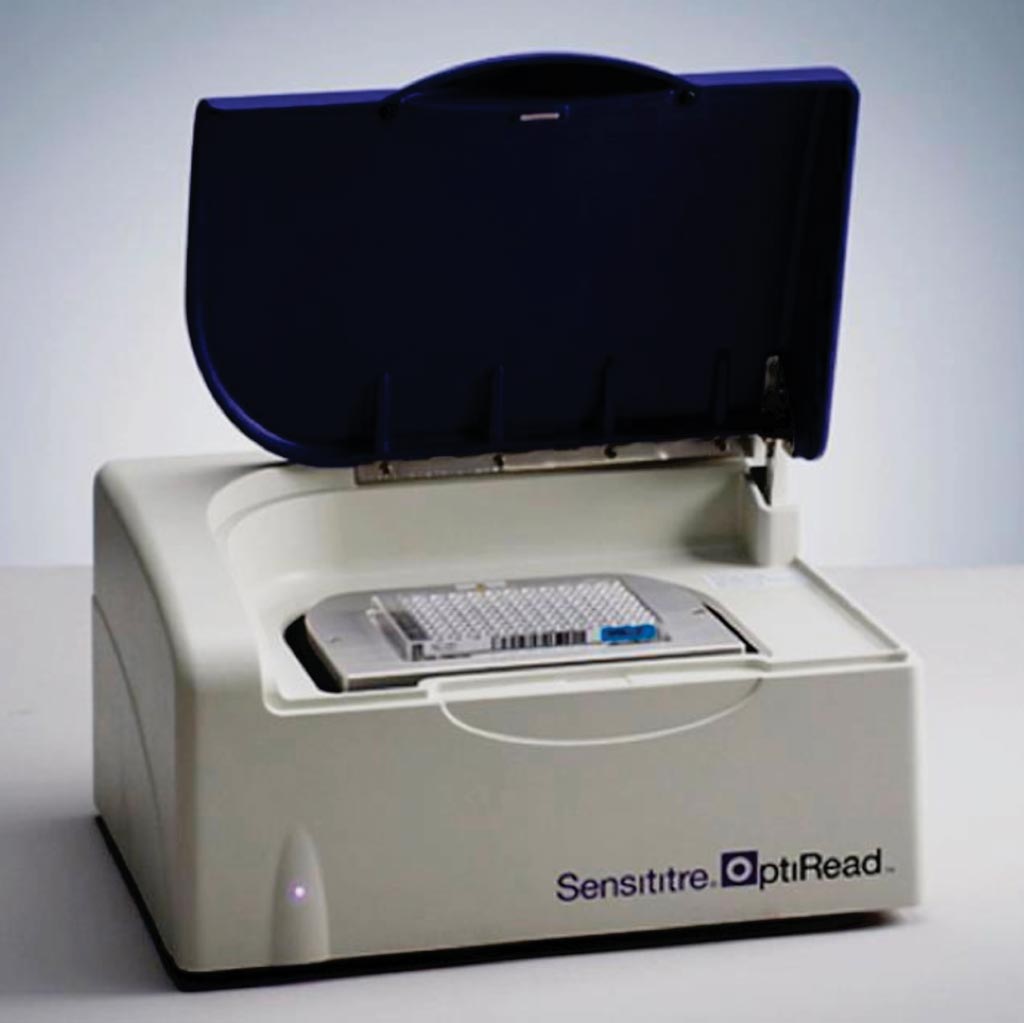Mycobacterium Mutations Associated with Clarithromycin Resistance
By LabMedica International staff writers
Posted on 09 Jan 2018
Mycobacterium abscessus is a leading cause of respiratory diseases and soft tissue infections and it is naturally resistant to many antibiotics in vitro, which complicates clinical treatment and leads to unsatisfactory results.Posted on 09 Jan 2018
Macrolides, such as clarithromycin and azithromycin, were regarded as the foundation for the therapeutic regimen for M. abscessus complex infections. However, clarithromycin resistance is increasing dramatically among M. abscessus complex.

Image: The Sensititre OptiRead automated fluorometric plate reading system for use with Sensititre microtiter plates in antibiotic susceptibility tests (Photo courtesy of Thermo Fisher Scientific).
Microbiologists at Tongji University School of Medicine (Shanghai, China) collected specimens from the affiliated Shanghai Pulmonary Hospital and a collection of 139 M. abscessus subsp. abscessus and 36 M. abscessus subsp. massiliense clinical isolates was used to explore the utility of the polymerase chain reaction-denaturing gradient gel electrophoresis (PCR-DGGE) technique for the rapid identification of 23S rRNA (Adenine(2058)-N(6))-methyltransferase Erm(41) (erm(41) and the 23S ribosomal RNA (rrl) gene mutations.
The team designed four primer sets to scan for mutations in the erm(41) and rrl genes using DGGE. PCR reactions and electrophoresis, as well as band retrieval and gel analysis, were performed according to previously described protocols. A Sensititre RAPMYCO panel was used to test the susceptibility of various antibiotics including clarithromycin against the 175 M. abscessus complex isolates.
The authors found a combination of 16 different DGGE patterns were observed for erm(41) gene, including 16 in M. abscessus subsp. abscessus and one in M. abscessus subsp. massiliense. Six DGGE patterns were obtained for rrl gene. Mutations in the erm(41) and rrl detected by DGGE were 100% identical to mutations detected by DNA sequencing. Among the 139 M. abscessus subsp. abscessus isolates, 36 isolates exhibited clarithromycin resistance on day 5. The other 103 were sensitive to clarithromycin on day 5, and 83 of these exhibited inducible resistance after 14 days incubation. Of the 36 M. abscessus subsp. massiliense isolates, 27 were sensitive and eight were resistant to clarithromycin on both days 5 and 14. Notably, one of the isolates was sensitive to clarithromycin on day 5, but displayed inducible resistance on day 14.
The authors concluded that their results demonstrated that DGGE technology is very sensitive to point mutations, as well as to small insertions and deletions in DNA sequences. The accuracy was essentially 100% among targeted fragments of the erm(41) and rrl genes. The results of whole genome sequencing confirmed DGGE efficacy, all distinct nucleotides polymorphisms were detected. PCR-based DGGE is a practical technique for the rapid detection of mutations in the erm(41) and rrl genes associated with clarithromycin resistance in M. abscessus complex. The study was published in the December 2017 issue of the Journal of Microbiological Methods.
Related Links:
Tongji University School of Medicine














